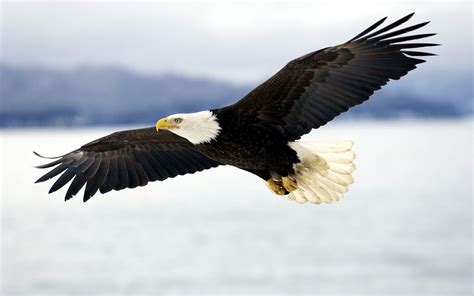By Jill Mulford
Though the cold, bleak sky is upon us, there’s plenty of bird wildlife to watch here in our community. We are home to at least four migrating or semi-migrating birds. Three of them visit us year after year from the northern tundra of Canada, Alaska, and Greenland, making their home here from September through April. The fourth bird may live close by but waits for the Ospreys to go south before showing his full feathers.
First to arrive are the familiar Canada Geese. Though large flocks of Canada Geese have taken up permanent residence in the Chesapeake Bay, ours appear to be migratory. They come, remain during the cold months then fly off to their homes in the Eastern Arctic Ocean. Their route is known as the Atlantic flyway. We are lucky they stay in the water here as the Canada Goose has become a large pest in suburban areas. They grow to 43 inches high with a 73-inch wingspan and can weigh up to 14 pounds. That creates a lot of noise and droppings if they make their way up to the lawns.
Plant growth along the edges of our waterways keeps them in the water because they don’t have a straight egress. It should not be cut short because these birds are aggressive and will beg for food. They should not be fed or encouraged on the land in any way because they belong in the water and they need to find their way back home in the spring. They are fun to watch though some communities have had to resort to noise-makers, hazing by Border Collies, and even hunting to discourage nuisance geese. This is nothing we want to do here in Queen’s Landing! We have estimated 750 Canada Geese in Macum Creek at the height of the winter season and they all go home. They form their V formation and fly away. This is just as it should be.

After the geese, the Tundra Swans arrive. Their numbers are much less, usually 30 or so in the community. They breed in the Arctic Ocean and migrate here via Canada and the Great Lakes and make their winter home on our coastal waters. These are the swans with the black feet, mostly black bills, and a straight neck. Smaller than the mute swans that used to live here, they are still big birds. They can grow to 59 inches tall with an 83-inch wingspan and a weight of 21 pounds. Their juveniles are gray until adulthood. Lovely to watch as they glide along in pairs or small groups, they take flight by running across the water and slapping their wings on the surface. They do not venture out of the water onto land in our area.

The third migrator is the small bufflehead duck. A diving duck, it is white with a black back and a greenish black head topped with a white bonnet. It appears small in comparison to the geese and swans but will eventually be 15 inches high with a wingspan of 24 inches. This, however, makes it good prey for the bald eagles, hawks, and falcons so it’s not a carefree existence in our community. This is another interesting bird to watch because it floats along, dives for food and eats under water, then takes off by flying straight up into the air. The bufflehead migrates back to its breeding grounds in Alaska and Northern Canada sometime between mid-April and May.

Our next visitor, the bald eagle, is not technically a migrator in our area but is still seen the most frequently in winter. In Macum Creek, a pair arrives right after the ospreys have left for the winter. They are seen in a bare tree in Gibson Grant across from our steps leading from the walking path to the Creek. The tree sticks up just high enough for the eagles to see all the surroundings. They perch there off and on all day sometimes sitting on the sand bars or fishing in the water. We have even seen the pair work together to tag team a little bufflehead until he was too exhausted to get away from them. Our eagles, which breed from January to March nest somewhere else and come here to feed and watch, keeping a good eye on all the goings on in the Creek. The nest of an eagle is huge and a pair keeps the same nest for a lifetime, adding sticks or rebuilding from year to year. It can be 2,000 pounds in weight. Adult eagles are large raptors, up to 40 inches in length, with a yellow hook shaped bill and a white head and tail. Their body is dark brown to black and they have long talons and no feathers on their ankles. Having a lifespan of 20 years, they mate for life and live all year in the Chesapeake area. The Bald Eagle, though threatened with extinction in the past, was removed from the endangered species list in 2007. 383 pairs of nesting eagles were counted in MD in 2004.
